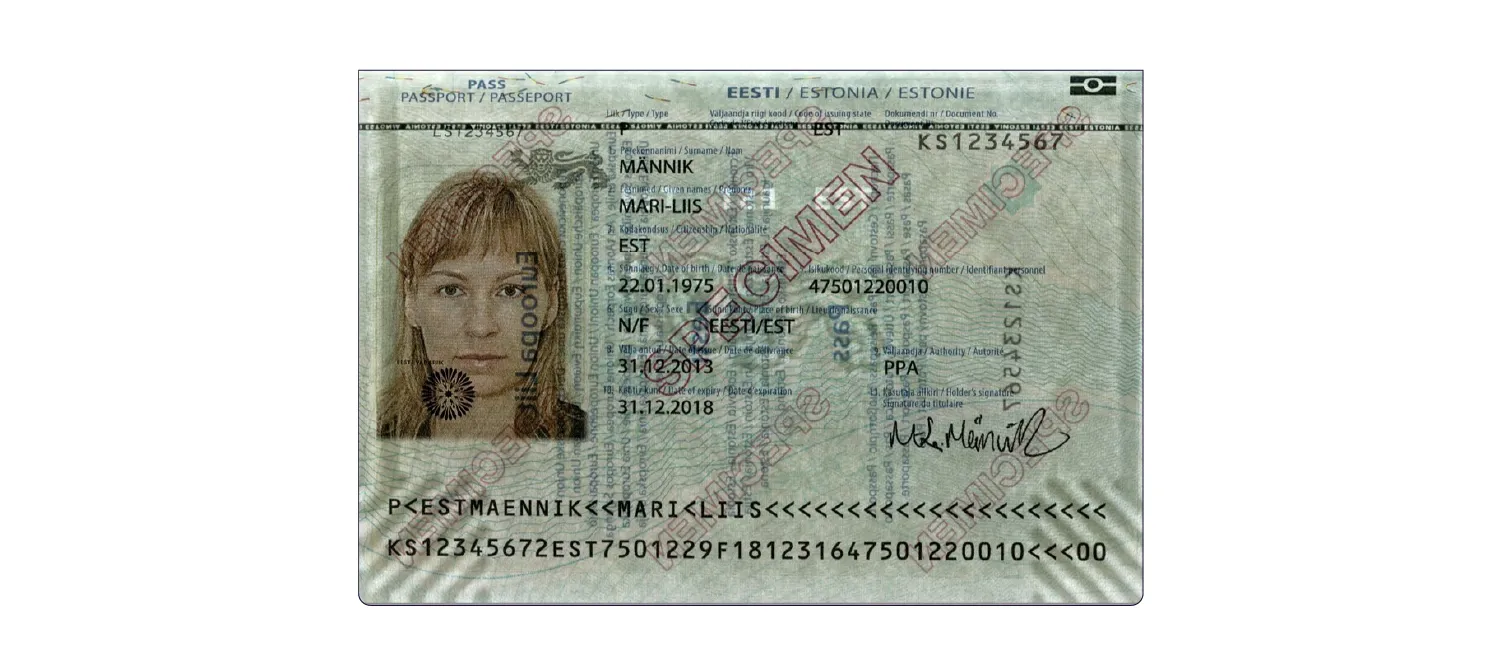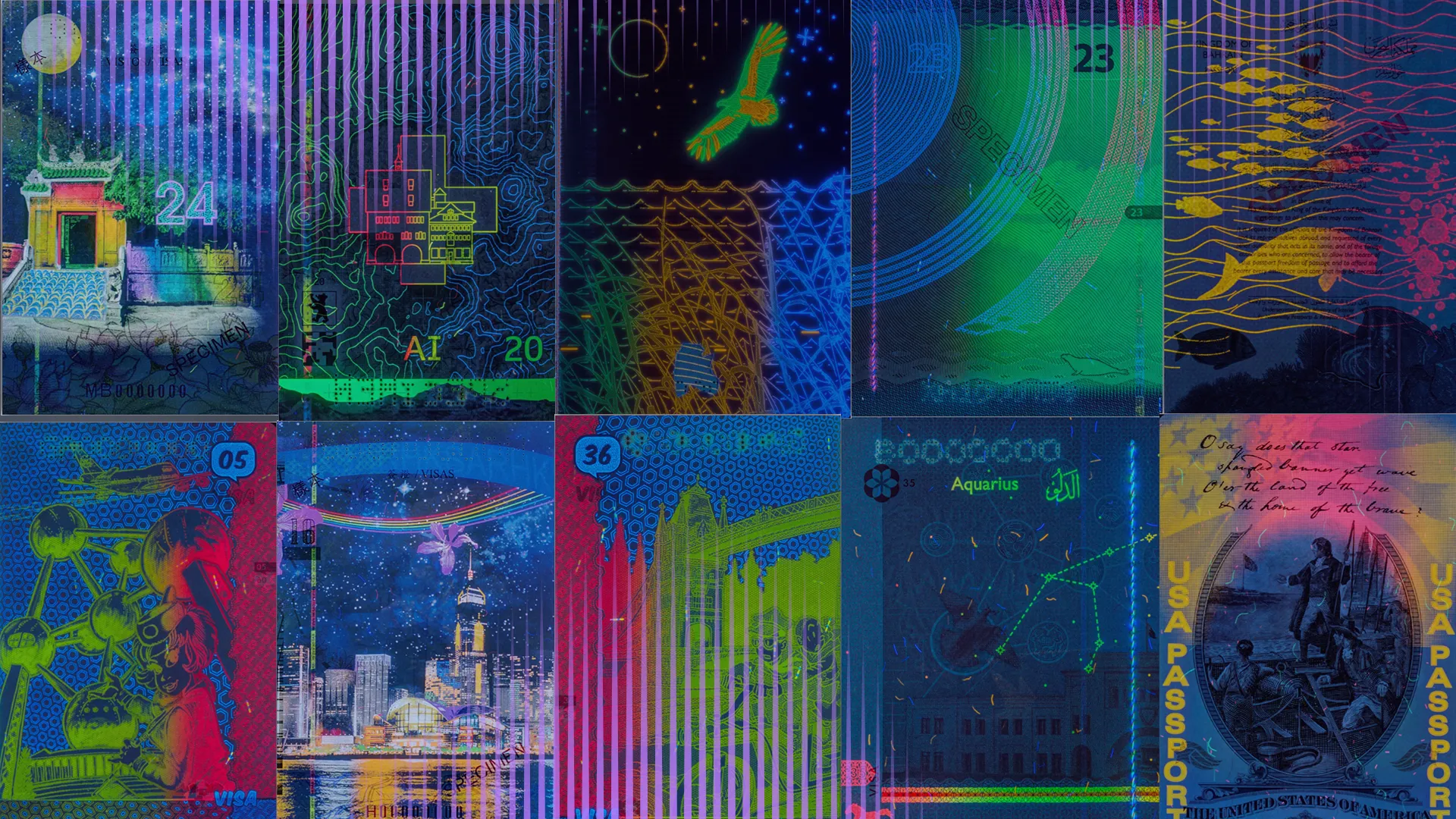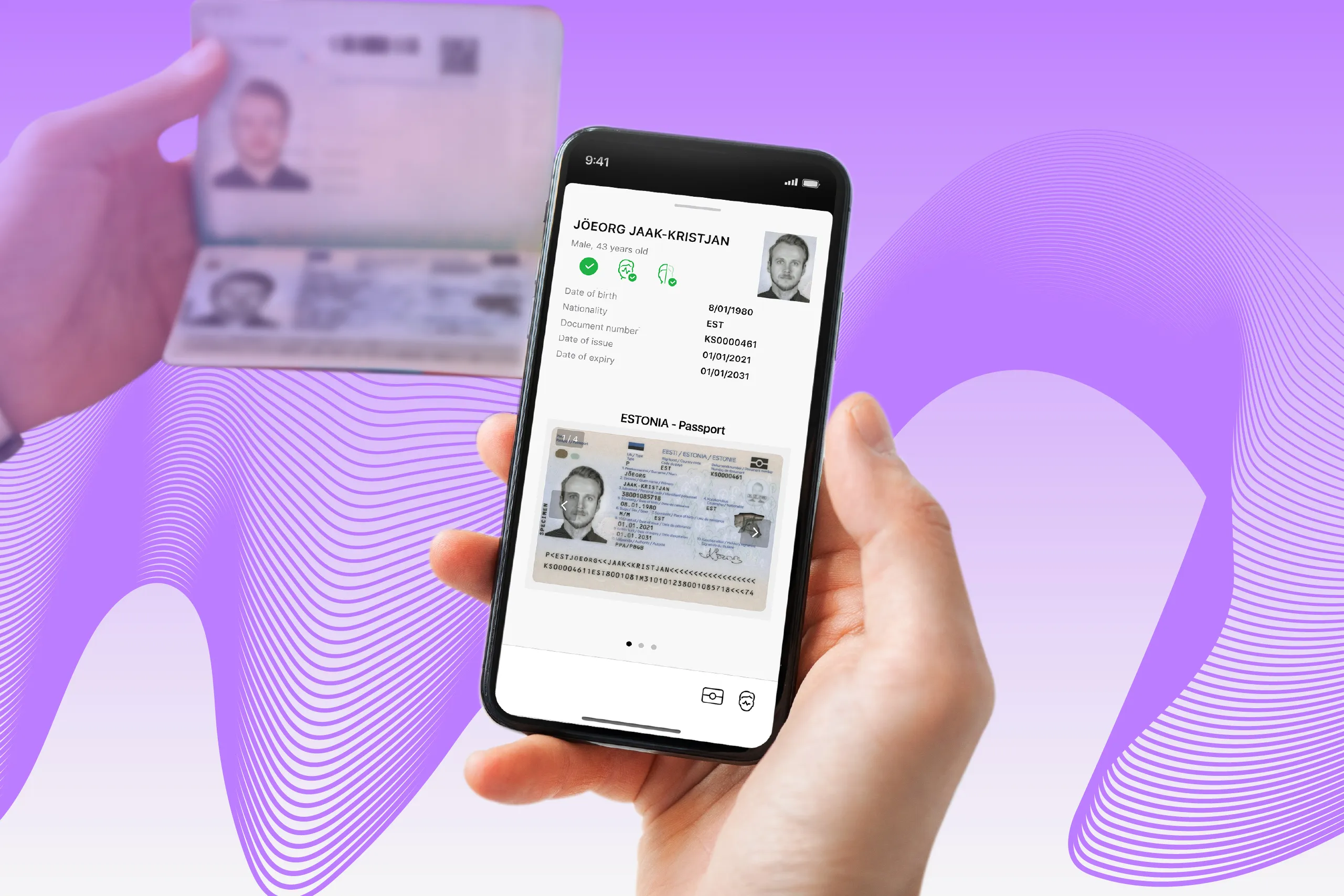The evolution of identity documents (IDs), driven by the need for greater security, convenience, and efficiency, shows no signs of slowing.
From passports introduced in the 19th century as essential travel documents to domestic identity cards that emerged later, IDs have steadily become more secure and reliable since the 1950s.
In this blog post, we’ll take a look at how identity documents have come so far, and imagine what IDs might look like in the future. We’ll highlight the new features they may include and how they'll continue to adapt to the demands of a rapidly digitizing world.
What has changed in IDs in the past two decades?
Leaving aside the remote past, let’s see how identity documents have changed in the first quarter of the 21st century (yes, we are almost halfway to the middle of this century!).
Over the last 20-plus years, identity documents have seen multiple innovations that significantly contributed both to their security and usability. Here are some highlights that represent the most drastic changes:
Global standards updates
Global standardization of identity documents has emerged as a crucial endeavor in the modern era, aimed at promoting consistency, interoperability, and enhanced security across international borders.
Organizations like the International Civil Aviation Organization (ICAO) have played a pivotal role in establishing common guidelines for identity and travel documents, such as machine-readable and biometric passports. For instance, it has been nearly 10 years since 2015 when ICAO standards were put in place that required all passports to be machine-readable. As a result, traditional paper passports, which were more vulnerable to tampering, have been replaced with more secure documents.

Passport of the Philippines, 2004: handwritten data, no MRZ

Passport of the Philippines, 2016: MRZ as per the ICAO standard
ICAO standards encompass various aspects, including document design, security features, and the integration of biometric data such as fingerprints and facial recognition. By associating these intrinsic traits with an individual's identity, biometric identification dramatically reduces the potential for fraud, impersonation, and unauthorized access.
These advancements not only bolstered the security of identity documents but also streamlined various processes, such as airport security checks and border control, by enabling swift and accurate verification of travelers' identities. Overall, the integration of machine-readable zones (MRZs) and biometric identification marked a pivotal advancement that redefined the capabilities and effectiveness of identity documents in the modern age.
New security features
The 21st century brought a handful of new advanced security features that have become standard in ID design throughout the world. Combining both cutting-edge materials and sophisticated technologies, these features made identity documents notably more durable and forgery resilient.
Now, high-durability polycarbonate—a robust, tamper-resistant material—serves as the foundation for many modern IDs, preventing physical damage and reducing the risk of counterfeiting over time.

Passport of Belgium, 2017: paper substrate

Passport of Belgium, 2022: polycarbonate substrate
Optical Variable Devices (OVDs), such as holograms, optically variable inks (OVI), and watermarks, create dynamic visual effects that are nearly impossible to replicate. Advanced optically variable printed images like Dynaprint offer complex, multi-layered designs that shift in appearance depending on the angle of view, further enhancing security.

Passport of Estonia, 2014, containing watermarks
Additional features, including LASINK, LetterScreen, Encrypted Invisible Personal Information (E-IPI), and Multiple Laser Images (MLIs) also contribute to protecting against counterfeiting. For instance, LASINK embeds a color-shifting image directly into the polycarbonate.

Driver’s license of Burkina Faso, 2017: main portrait made with the LASINK technology
RFID chip introduction
RFID (Radio-Frequency Identification) chips certainly belong in the list of new security features above, but they deserve a close-up.
The integration of RFID technology ushered in yet another new era of enhanced functionality and security within identity documents. It enables wireless NFC communication between the identity document and compatible devices, allowing swift and contactless data exchange. This innovation has found widespread application in electronic passports (e-passports) and identity cards, providing an efficient way to verify identity at border crossings and secure access points.

Biometric ID card (2021) and Passport (2008-2013) of France, containing RFID chips
RFID chips, embedded within identity documents, contain a digital copy of the holder's photo, as well as personal and biometric data, which border control systems can scan without physical contact. Not only does this speed up processing times, but it also adds a layer of protection, since chip data is secured with encryption.
However, to make the most of this technology, it is essential to properly verify RFID chips and ensure they are authentic. For additional trustworthiness, we recommend that this procedure be carried out on a secure server instead of relying on results only from a user’s smartphone, as in the latter case, you can’t guarantee you’re dealing with a genuine physical identity document.
New document formats
The most recent years have seen the rise of new ID formats, predominantly digital ones (which is definitely not surprising). Digital ID cards, mobile driver’s licenses (mDLs), Digital Travel Credentials (DTCs)—all these solutions allow people to store their IDs on smartphones, making it possible to authenticate identity digitally for a wide range of services.
For example, Apple Wallet now supports mDLs in some states in the US, allowing individuals to show their driver's license via their phone. Similarly, DTCs provide secure digital proof of identity and travel eligibility, aimed at streamlining airport processes.
Yet, new digital ID formats haven’t yet received wide adoption across the world. Moreover, as stated in Regula’s digital identity report, digital IDs will not replace physical documents in the near future, because a significant number of organizations still rely on manual identity verification.
Global survey results: What do businesses think about digital IDs, and are they ready to embrace them?
What purpose do these changes serve?
The drive for innovation in ID design and protection comes from a mix of security challenges, technological advancements, and user expectations. Let’s have a closer look.
Sophisticated document fraud
Counterfeiters never cease inventing new techniques to replicate even the most advanced security features in IDs. High-quality forgeries can now contain even RFID chips (which is why it’s crucial to ensure trustworthy verification).
As a response, document issuers must continuously upgrade ID features to stay a step ahead. That is why more and more elements are being added to all sorts of identity documents, however very few elements are ever removed.
For example, recently, North Carolina issued their redesigned driver’s license and ID card, which contain over 50 security features. The abundance of various security features makes it harder for fraudsters to fly under the radar.
The rise of AI-generated fraud
Artificial intelligence (AI) has made tools for forgery and impersonation more accessible. Today, one needs as little as $15 to get a convincing-looking AI-generated ID. Plus, we’re seeing a drastic increase in deepfake attacks. Regula’s dedicated research shows that the number of businesses that experienced at least one deepfake incident has doubled since 2022.
Get your free copy: Regula Deepfake Study 2024
Demand for enhanced user experience
Modern consumers expect to manage their lives digitally, from banking to travel. The desire for convenient and instant access to personal documents has paved the way to start the transition from physical to digital IDs. Following these digital identity trends, many countries have started creating digital profiles for their citizens. Such digital identities provide access to various services, allowing users to conduct secure transactions and engage in online activities while minimizing the risk of fraud and unauthorized access.
Get posts like this in your inbox with the bi-weekly Regula Blog Digest!
What shall we expect in the coming 20-plus years?
With all of this in mind, what does the future hold for identity documents?
Enhanced security features in physical IDs
The most likely scenario is that there will be further evolution of some of the more advanced elements that have been introduced in recent times. For example, enhancements may be introduced in RFID chips, such as the amount and type of data that they carry. A wider use of QR codes is also expected. It is very likely that, in the future, a new type of QR code or similar technology will be able to store more data and potentially not be as reliant on size for readability.
We can also be assured that there will be an increase in the use of dynamic security features like laser-engraved portraits, thermochromic ink, etc. Polycarbonate layers with embedded security features, interactive holograms, and variable data printing can offer even greater protection against counterfeiting.
In the end, based on what history has shown us, we are very unlikely to remove security features from IDs, as the requirements and use cases are so broad and varied. The future holds more features (especially more advanced ones) while retaining the vast majority of the current elements of IDs.
Physical IDs won't disappear anytime soon
The world is rapidly going digital, and people want every service available from the comfort of their smartphones, but it is still very unlikely that physical documents will disappear in the near future.
In certain countries and regions where digital IDs are already advancing, we may see some breakthroughs and expect general adoption of digital identities. However, full international agreement on e-document standards will take significant time, and will require a lot of collaboration.
Physical IDs provide a universally understood and trusted format, making them convenient and practical for everyday use. They are also easy to inspect manually in low-tech environments, making them accessible even in areas without advanced verification infrastructure.
And yet—Digital IDs
Let’s face it: sooner or later we will end up with fully digital identity documents. The future of digital identity is certain, as they will likely become more integrated into our daily lives, for example with a passport stored in a smartphone wallet.
These future digital IDs will stop being just a container for basic personal information, duplicating the original physical document issued by authorities. They will encompass more sophisticated biometrics, which will further personalize and secure the authentication process. Digital IDs may also link to a range of credentials, from medical records to travel documents, allowing for a holistic and flexible approach to identity that can be managed and verified through a single digital hub, like a smartphone or secure wearable.
But, more importantly, digital IDs of the future will be much more secure and easily verifiable thanks to robust cryptography and digital certificates employed to issue them. By checking the authenticity of these issuer’s credentials, it is possible to ensure that you are dealing with a genuine digital ID, not a forgery.
Imagining the passport of the future
So, can we dare to imagine what the ID of the future may look like? Let’s say it’s a passport.
It will probably blend both physical and digital elements to create a robust identity document that serves various needs. Its physical version will be made from durable polycarbonate, containing dynamic holograms, tactile security features, and a microchip that stores both digital and biometric data.
A linked app will provide instant digital verification for faster processing at border checks, monetary transactions, hospital admission, and many other scenarios.
Additionally, passports of the future could feature an embedded QR code on the cover, allowing holders to quickly download a secure digital copy.


Not the end
At Regula, we’re working to stay ahead of the curve by developing identity verification solutions that meet the evolving demands of both physical and digital identities. With each new advancement in ID design, we’re here to ensure that these documents remain secure, accessible, verifiable, and convenient.
Reach out to Regula to learn more about our latest solutions in document verification.





